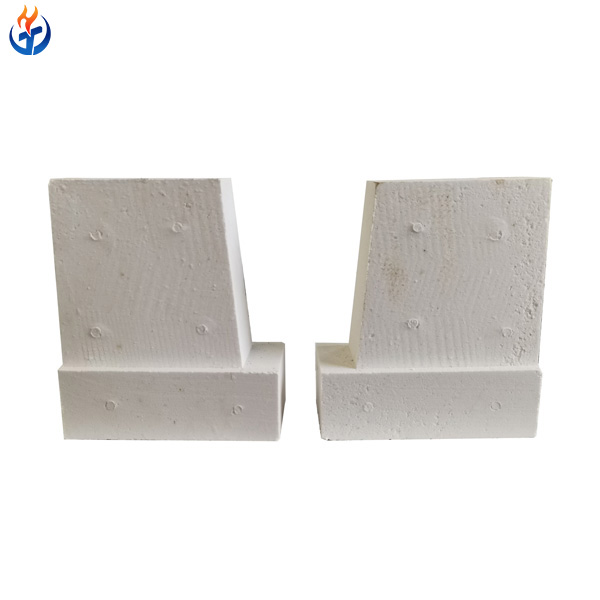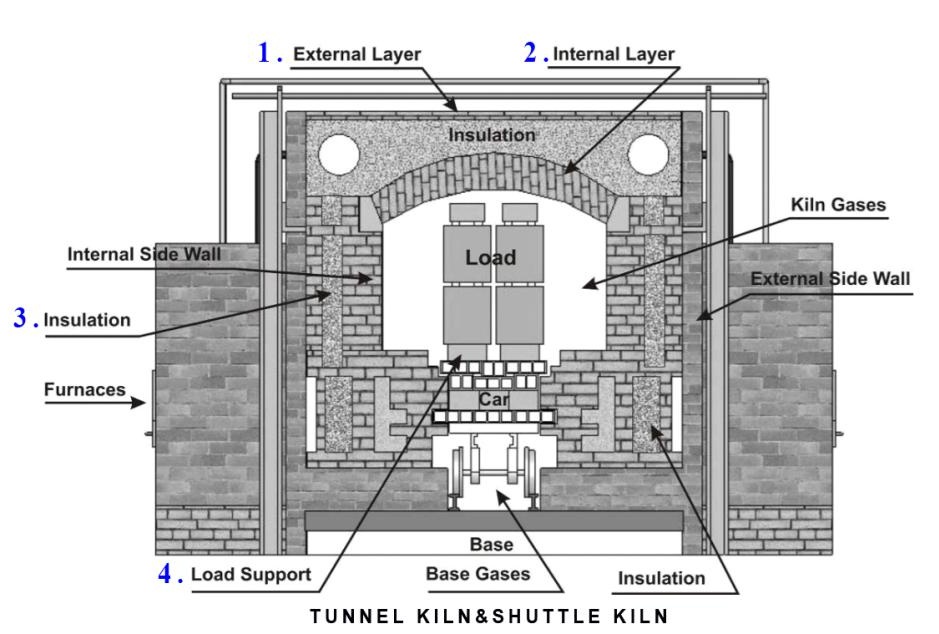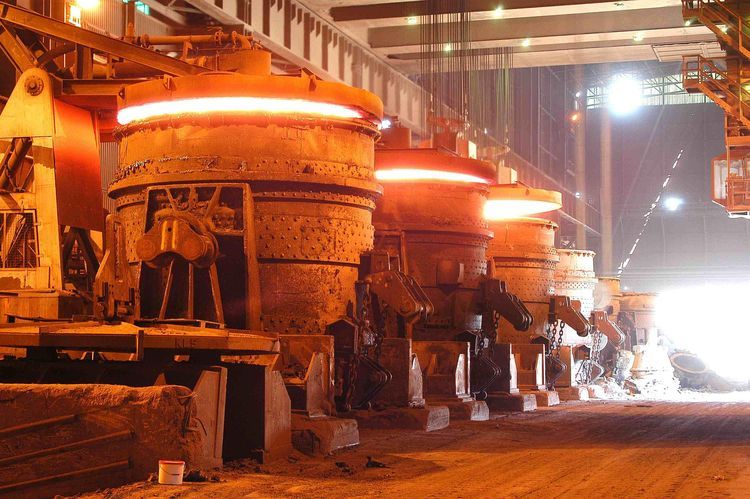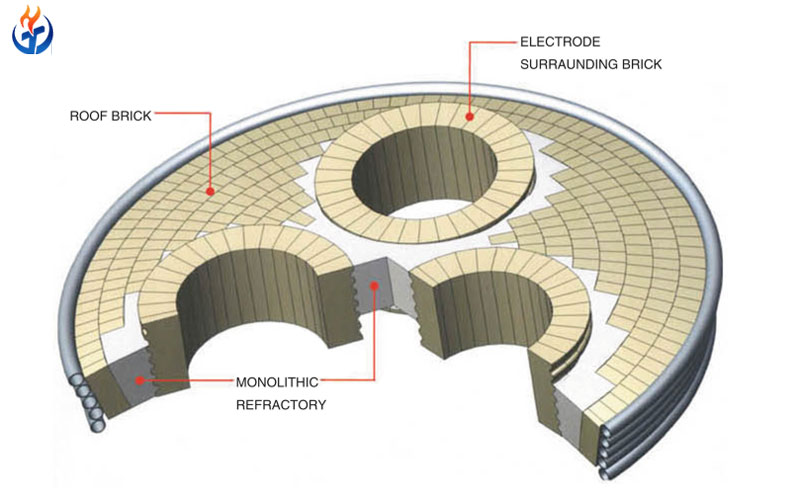In the demanding environment of ceramic tunnel kilns, selecting the right refractory lining material is crucial for achieving thermal efficiency, structural stability, and long service life. Among the various refractory products available, corundum mullite bricks have emerged as one of the most reliable materials for lining ceramic tunnel kilns. Combining high-temperature resistance, excellent thermal shock stability, and superior wear performance, these bricks are specifically engineered to meet the rigorous demands of modern ceramic production.
In this article, we will discuss the composition, characteristics, manufacturing process, and advantages of corundum mullite bricks for ceramic tunnel kiln lining, as well as their typical applications and performance in actual kiln operations.

Understanding Corundum Mullite Bricks
Corundum mullite bricks are high-performance refractory products made primarily from fused corundum (α-Al₂O₃) and synthetic mullite (3Al₂O₃·2SiO₂). This combination provides an ideal balance between strength, thermal stability, and resistance to chemical corrosion. The bricks are typically produced by high-pressure forming and high-temperature sintering or by casting with selected high-purity raw materials.
The key feature of this material lies in its microstructure: the interlocking network of corundum crystals and mullite phases provides both high load-bearing capacity and exceptional resistance to thermal deformation.
Chemical Composition and Physical Properties
A typical chemical composition of corundum mullite bricks includes:
| Component | Typical Content (%) |
|---|---|
| Al₂O₃ (Alumina) | 70–90 |
| SiO₂ (Silica) | 8–25 |
| Fe₂O₃ (Iron Oxide) | ≤0.3 |
| TiO₂ | ≤0.3 |
| Apparent Porosity | 15–18% |
| Bulk Density | 2.7–2.9 g/cm³ |
| Cold Crushing Strength | ≥70 MPa |
| Refractoriness Under Load (T₀.₆) | ≥1700°C |
| Thermal Shock Resistance | ≥20 cycles (1000°C–room temperature) |
These technical parameters demonstrate that corundum mullite bricks are capable of maintaining structural integrity and strength under continuous exposure to temperatures between 1600°C and 1800°C.
Advantages of Corundum Mullite Bricks in Ceramic Tunnel Kilns
Ceramic tunnel kilns operate under harsh conditions — prolonged high temperatures, continuous cycles, and corrosive kiln atmospheres. The refractory lining must endure extreme thermal stress while maintaining precise temperature control for uniform sintering of ceramic products.
Using corundum mullite bricks for ceramic tunnel kiln lining offers several key advantages:
(1) Excellent High-Temperature Strength
Corundum (α-Al₂O₃) has one of the highest melting points among oxide ceramics (2050°C). The presence of corundum phases significantly enhances the brick’s load-bearing strength and prevents deformation or sagging of kiln walls and roofs, even under long-term service conditions.
(2) Superior Thermal Shock Resistance
Thanks to the mullite phase, these bricks exhibit low thermal expansion and good elasticity at high temperatures. This allows them to resist spalling and cracking caused by rapid temperature changes during kiln start-up or shutdown cycles.
(3) Outstanding Erosion and Wear Resistance
Ceramic tunnel kilns often handle abrasive kiln furniture, glazes, and dust-laden gases. The dense microstructure and high hardness of corundum mullite bricks provide strong resistance to mechanical wear and erosion by molten materials or vapors.
(4) Excellent Chemical Stability
The bricks have exceptional resistance to alkali vapors, slag, and volatile oxides (like sodium, potassium, and lead compounds) commonly present in ceramic kilns. This minimizes chemical attack and prolongs the lining’s service life.
(5) Energy Efficiency
Because of their low porosity and excellent insulation performance, corundum mullite bricks help maintain consistent kiln temperatures, reduce heat loss, and improve fuel efficiency — leading to lower operating costs.

Typical Applications in Ceramic Tunnel Kilns
Corundum mullite bricks are widely used in various zones of ceramic tunnel kilns, particularly in areas exposed to the highest temperatures and most aggressive environments. Common applications include:
Kiln roof and hot zone: High mechanical strength and low creep deformation at elevated temperatures make these bricks ideal for roofs, arches, and suspension structures.
Side walls and burner zones: Excellent erosion and corrosion resistance ensure long service life where flame impingement and hot gas flow are intense.
Kiln cars and saggars: Corundum mullite materials are often used to make kiln furniture or as protective linings on kiln car surfaces to resist wear from repeated loading.
Combustion chamber and heat exchanger areas: Stable under oxidizing and reducing atmospheres, ensuring consistent temperature distribution.
By properly selecting corundum mullite bricks for critical areas, kiln operators can significantly extend lining life and maintain stable production quality.
Manufacturing Process of Corundum Mullite Bricks
The production of high-quality corundum mullite bricks involves precise control over raw material purity, particle size distribution, and sintering conditions. The general process includes:
Raw Material Preparation – High-purity alumina, industrial mullite, and additives are carefully proportioned and mixed to ensure uniform composition.
Forming – The mixture is pressed under high pressure or cast into molds to achieve the desired brick shape and density.
Drying – Formed bricks are dried under controlled temperature and humidity to prevent cracking.
Sintering – Bricks are fired in high-temperature kilns (1600–1800°C) to develop the required phase composition and bonding strength.
Inspection and Finishing – Each batch undergoes strict quality control testing, including strength, density, and dimensional accuracy checks, before packaging.
Through this rigorous process, Xintai Refractory ensures each corundum mullite brick meets international standards for performance and consistency.
Comparison with Other Refractory Materials
To understand why corundum mullite bricks are favored in ceramic tunnel kiln linings, it’s useful to compare them with other commonly used materials:
| Property | Corundum Mullite Brick | High Alumina Brick | Silica Brick | Lightweight Insulating Brick |
|---|---|---|---|---|
| Max Service Temperature | 1750°C | 1500°C | 1650°C | 1350°C |
| Thermal Shock Resistance | Excellent | Moderate | Poor | Excellent |
| Chemical Resistance | Excellent | Good | Poor in alkali vapors | Moderate |
| Mechanical Strength | Very High | High | Medium | Low |
| Typical Application | Hot zones, roof, burners | Side walls, car decks | Crown areas (glass kilns) | Insulation layers |
The comparison clearly shows that corundum mullite bricks offer the best combination of strength, temperature resistance, and chemical stability, making them ideal for ceramic tunnel kiln linings that require both durability and efficiency.
Conclusion
In conclusion, corundum mullite bricks for ceramic tunnel kiln lining represent one of the most durable and efficient refractory solutions available today. Their combination of high-temperature strength, thermal shock resistance, and chemical stability ensures long service life, reduced maintenance, and improved energy efficiency.
Whether for roof structures, burner zones, or kiln cars, these bricks deliver outstanding performance under severe operating conditions. For ceramic manufacturers seeking to optimize kiln performance and reduce production costs, corundum mullite bricks from Xintai Refractory are a dependable and cost-effective choice.



